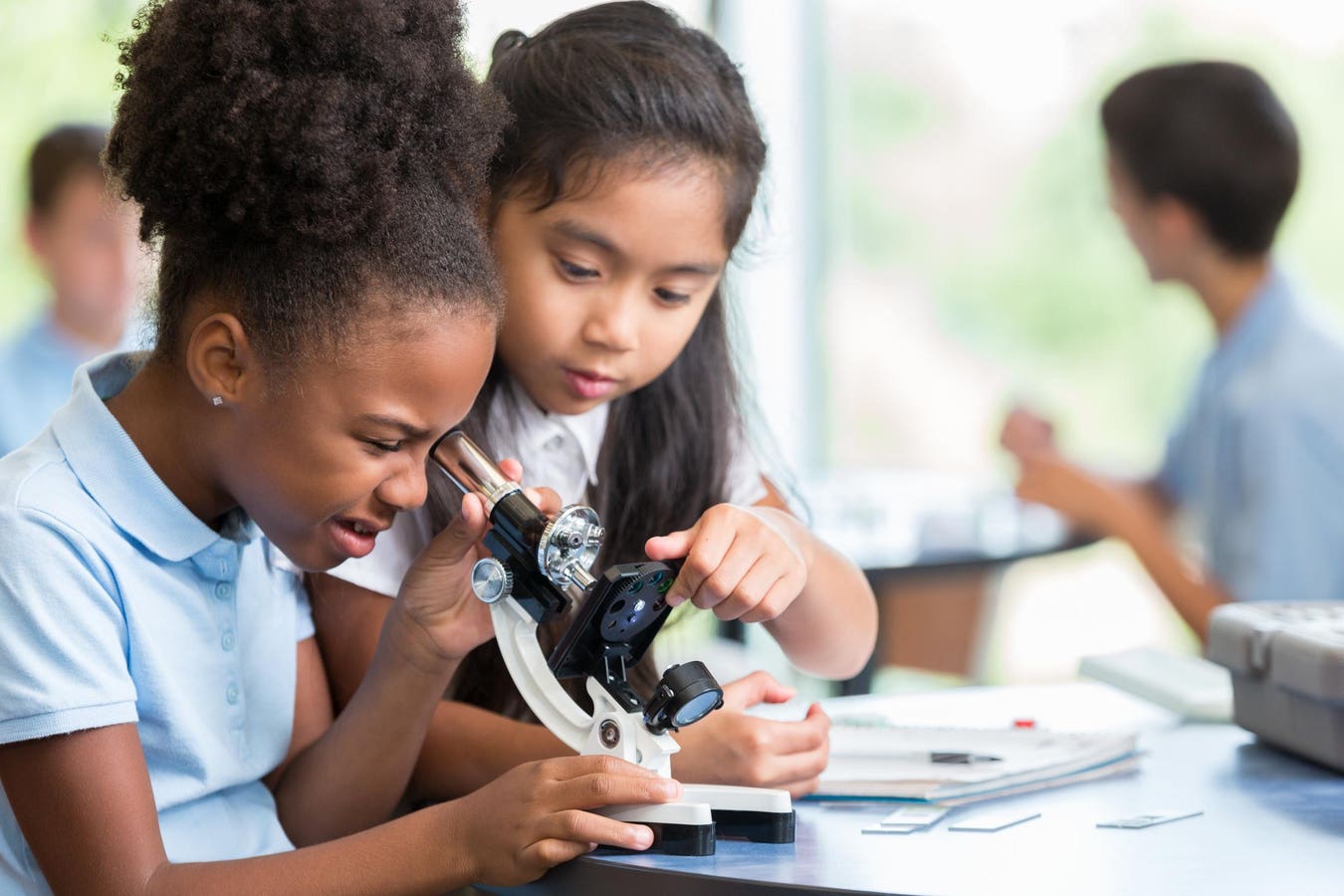An approach that’s worked in colleges and workplaces can be brought into K-12 schools with great effect on girls’ persistence in STEM.
Women comprise only 28% of the STEM workforce in the United States. And a recent survey by MetLife found that women in STEM were nearly twice as likely than women in other industries to say they are considering leaving the workforce, citing burnout, being passed over for promotions, not being paid equally, and lack of purposeful and meaningful work.
New data from the Department of Education’s College Scorecard show that STEM majors still vastly outpace liberal arts and humanities majors in terms of future earnings, with all but five of the top 100 programs in STEM fields. Several two-year associate degrees in STEM fields lead to significantly higher median earnings for graduates than over half of the four-year degrees included in the study. With jobs in STEM fields expected to grow twice as fast as those in non-STEM fields, there’s a window of opportunity for young women to step into this rapidly growing, financially lucrative sector that is shaping our future.
Yet it’s been shown that girls and young women lose interest in math and science as they move through their school years, even though NAEP testing data consistently show no measurable difference in science aptitude between fourth grade boys and girls. I’ve written extensively about the importance of belonging to persisting in STEM. On this International Day of the Girl, I want to focus on relevance as a key to unlocking women’s brilliance and impact in STEM.
Studies focusing on college and the workforce have consistently shown that when women understand the impact of STEM on improving the world, they’re more likely to persist in STEM classes, majors, and fields. According to new research from the University of Wisconsin–Madison, simply asking college students to explain in writing how the scientific concept they’re studying applies either to their own life or to helping others led more people, especially those under-represented in STEM, to stay in the field. Judith Harackiewicz, the professor who studies motivation and whose lab found these results, thinks these short prompts tap into a powerful source of motivation: relevance.
A recent study by Girls Who Code in conjunction with Logitech found that an overwhelming majority of women (92%) said the ability to make a meaningful contribution to society is a primary factor in their career progression. Delphine Donné, General Manager, Creativity & Productivity at Logitech, told me it was “eye-opening” to see the “importance of inspiring women of the role they can have and understanding the impact of their work.”
These insights from post-secondary offer a timely lesson to K-12. A study released by the Bill & Melinda Gates Foundation earlier this year found that when asked “what K-12 math education should ideally be like,” survey respondents were most likely to say “relevant to the real world” and “useful.” The problem, the authors noted, is that math education is perceived as unengaging, outdated, and disconnected from the real world, causing students to be uninterested in the subject. The solution they identified is to “make math education more relevant and engaging so that more students will succeed in math and, thus, later in life.” In focus groups, parents and teachers defined relevant as “teaching math through the prism of real world and societal examples” and “drawing connections between content and students’ lives outside the classroom.”
A clear take-away for teachers wanting to keep more girls engaged in STEM, Donné underscored, is to emphasize the impact of what you can do in STEM fields and that it isn’t “technical or boring.” Shannon Richardson, a high school science teacher in Brooklyn, NY, reinforced the same theme when she told me that what draws people most to STEM fields, in addition to curiosity and a desire to create, is a “desire to solve the world’s problems.” And Leuna, a South Asian woman from New York, shared that she persisted in STEM because “my whole family was very prone to diseases. I watched my grandfather die of lung cancer, my grandmother suffering from severe diabetes for years and my mother be diagnosed and healed from breast cancer. . . Therefore my dream of becoming a healthcare personnel was birthed, so that I could someday provide aid to those who desperately need it.”
International Day of the Girl challenges us to center girls and invest in their leadership. As Mattie Kahn’s new book, “Young and Restless: The Girls Who Sparked America’s Revolutions”, reminds us, girls have always been changing the world. Drawing the connections between STEM and the real world opens up more paths for them to do it.
Read the full article here





